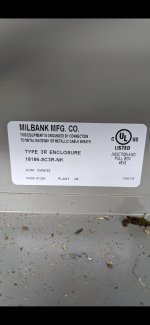SceneryDriver
Senior Member
- Location
- NJ
- Occupation
- Electrical and Automation Designer
You don't even need the jumper. Removing the paint and through-bolting is sufficient.Could I use something like an Eaton ground bar in this junction box (Picture attached) if I scrape the paint behind the ground bar, scrape the paint on the opposite side, through nut and bolt it, and run a jumper to the green screw pictured in the box. The largest circuit is 20 amps, so I think I could use a #12 jumper.
SceneryDriver

